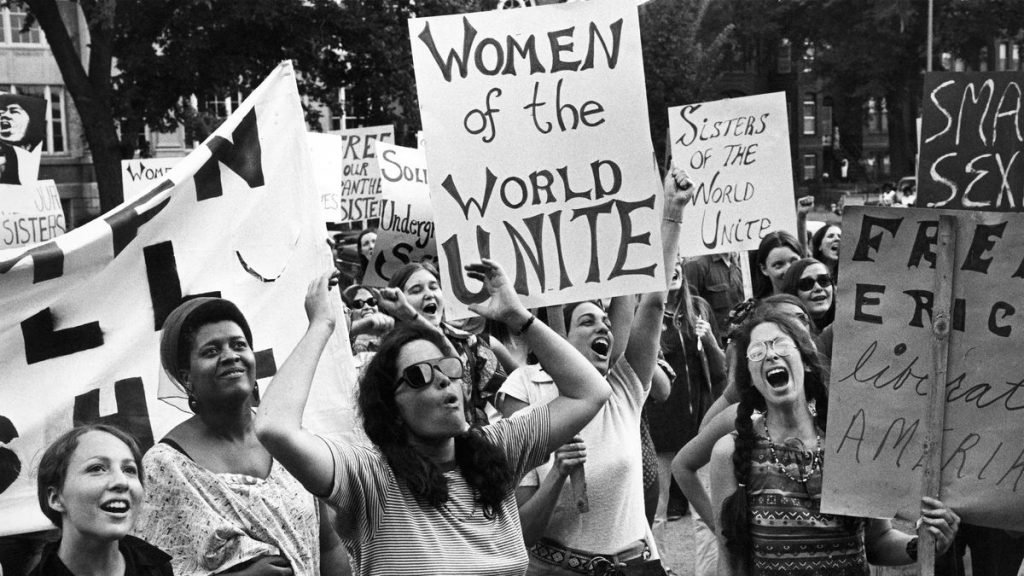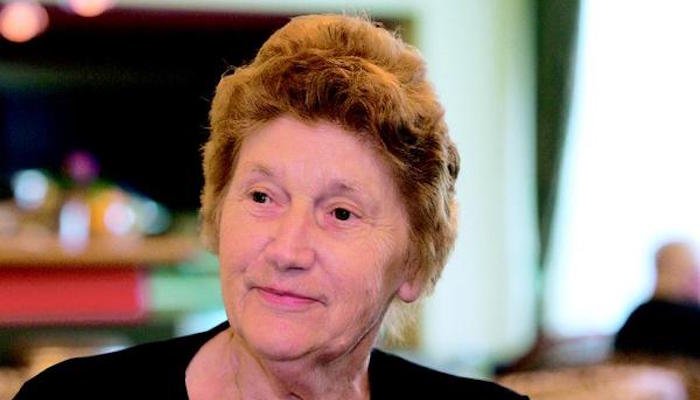Realism through Feminist lensed analysis

Introduction:
The Realist development of the international relations hails from Machiavellian texts: The Prince which enshrines the role of state and the Prince’s certain behavioral characteristics for the state’s foreign policy to be successful. What must be noted here, is that there is no mention about the Princess, but description of a woman “Fortuna”. According to Machiavelli “women” must be coerced into submission. In the contemporary realist theory, Machiavellian Fortuna can now be found outside the sovereign states in the anarchial domain of international relations[1] The aim of the article is to stress on the feminist lensed analysis of the realist tradition in International Relations. Considering the vast nature of the feminist theory owing to the long history of struggle, the paper will look at the conceptualization from two broad categories of feminist ideologies: Standpoint Feminism and Radical Feminism.
The first section of the paper will introduce with the Evolution of the Realist tradition in International Relations, this section will cover till 1980’s. The Second section of the body will focus more on the critical feminist conceptualization of the realist tradition through standpoint and radical feminism. Further in the discourse, the paper will try to showcase two case studies: Mark Tessler and Ina Warring study to discover the links between gender, feminism, and international relations among Middle Eastern Societies. The second case study will focus on the Feminist lensed analysis on the diplomacy surrounding to Nuclear Arms which can be used to study the Hegemonic Masculinity in the study of Realism. Global Evolution of Realist tradition in International Relations: Thomas Hobbes conceptualized anarchy in his state of nature where men exist in the state of war. Hobbesian solution to such a case was the sovereign who was endowed with the responsibility/power necessary for general situation of anarchy and war. In contemporary times scholars in IR found out that the dangers of anarchy can be found in the hierarchy of the states and the balance of power.[2] The Kantian internationalists regarded the clash among different interests in a state of continual war and subjugations. Kant addressed the question is it possible to reach the absence of conflict in his essays in “Toward Perpetual Peace and Idea for a Universal History with Cosmopolitan Intent” here he tried to analyze the conditions of peace.

These texts are a milestone in international political thought.[3] In the early years of IR was concerned with the prevention of wars, the Kantian thought was replaced by the group realists who advised: military preparedness, self-help could ensure state’s survival in the anarchial nature of IR. This shift came about to be from World War II. Woodrow Wilson’s fourteen points installed belief tacit nature of democracy as a model for the conduct of diplomacy. In 1939 the world war II broke out which opened the fault lines with the idealists who were labelled as the predecessors of the realists. Realists categorized them as misguided who believed in the improvement of human nature and law-governed behavior in the International system. The debate between realists and idealists from 1940’s -1950’s revealed the gender distinction, where the realists attributed the stereotypical characteristics of women to the idealistic character to the idealists. Women were thought to be naïve and unrealistic.[4] For long the Realist tradition in the field have avoided the gendered lensed. International Relations has often been described as the last bastion of social sciences because of the sheer rigidity it upholds in its conceptualization.[5] Realism fashioned itself from the natural sciences thus its arguments are based on the objective and universal laws which will explain the rouge nature of state behavior. Realism till date remains as the most dominant approach to international relations. Contemporary Feminist theory started to center from the 1980s when the positivist nature of the theory.[6] Gender and Patriarchy in International Relations Feminist discourse in the IR theory stressed on the fact that the domain is highly gendered, rather than being gender neutral.
Tickner explains the reason why the domain of Political Science and IR rests on the plank of gender distinction is because of the theorists like Machiavelli and Hobbes. The dominance of men in the field of diplomacy and in Machiavellian term the princes, who are bastion of carrying out the foreign policy. Women have always belonged to the pedestal of private affairs unsuitable to the realpolitik[7] It is in this context where we should clarify two terms in relation to feminist theory: Gender and Patriarchy and their following usage in the international relations.[8] Gender refers to the complex social construction of men’s and women’s identities and behaviors in relation to each other. Fundamental in the discourse on gender is the nation of power and power dynamics between genders.[9] The next term patriarchy can be described as a continual system where females are put in subordination to men in terms of power dynamics and status. Lorraine Cole describes “it is based on a belief that it is right and proper for men to command and women to obey” Patriarchal roots as she notes dates back as Aristotle assertion to women’s biological inferiority in relation to her reasoning capabilities, this was further perpetuated by the most other world religions.[10] Based on the above distinction of gender, and Patriarchy and how they intersect in the field of International Relations, it’s important to show how they play out in the field: Donald Regan who was Ronald Regan Security Advisor in 1985 declared “Women are not going to understand missile throw weights or what is happening in Afghanistan, most women would rather read the human-interest stuff”[11] Feminist stresses on the fact that diplomats, policymakers, heads of government have been highly male dominated and gendered, their backgrounds hail from patriarchal social and political grounds which limits the scope of discussion in the field of IR and stresses less on the “women’s role in politics”[12] Women are often forced to discard their femineity in the tough world of International politics and take up masculine roles to be considered successful. In the theory of estrangement Andrew Linklater points out the relationship of the state with women has been marginal in most societies, feminist ideologies do not fit in within the realm of state and political boundaries. Thus, they excluded women in international relations.[13]

A strong example that can be drawn from this context is the phrase “Catch-22” situation which was referred by Eric M. Blanchard. It refers to a case where candidates seeking political office will depend on past military service as a qualification, this puts women in the disadvantage as women generally lack military experience and thus by limiting her opportunity to attain national government position involved with international and issues of defense, security.[14] From the discussion above it is clear about why feminists would argue that gender and patriarchy play a major role in denying women equal access to power and position in international relations. Feminist Lensed Analysis: In accordance with the theme of the paper, this section will investigate into the realist tradition in the IR theory from the perspective of Standpoint Feminism and Radical Feminism. Standpoint feminism refers to “gendered construction of knowledge, which helps us to understand traditional topics in international relations.
It is also alerting us to the idea that gender may be structuring how we think in international context”[15] Major proponent of this school of thought is J. Ann Tickner. Standpoint Feminists like Tickner argues that should address the acts of violence (rape, ethnic cleansing) from foreign perpetuators of the crime as well from the citizens as well, these acts of violence are never addressed in the International political discussions because of the state-centric approach that realism envisages. Tickner in Gender in International Relations introduces the concept of Feminist Security Theory, which recognized the “structural violence”[16] to define the threat to one’s environmental and economic insecurity caused by the domestic and international structures of oppression.[17] Thus, Realism which vouches for security of the state in the international realm, but not from a gender consideration, the missing feminist perspective has resulted in the policymaking that has turned out to be detrimental to women. Another school of thought within the Feminist school which has critiqued the Realist school of thought is the Radical Feminist. “Radical Feminist focuses on the lives and experiences of women, showing how women’s activities are made invisible on international scene”[18] Cynthia Enloe, argument rests on the idea that feminist should seek women where they have already fulfilled roles to “ensure the international system works smoothly and efficiently” “such as the work done by diplomatic wives and military prostitutes” Thus by seeking to ask the question “Where are the women”.[19] Enloe while speaking from the post-colonial perspective talked about description of pictures of native women on postcards sent from Asia and Africa depicted the white-man’s burden to civilize the societies, former colonial states and their leaders have often been called out as “emotional and unpredictable” few characteristics only associated to women.[20] Enloe further argued that issues such as sex trafficking is considered less important before the state-centric approach of military and war, and the theory of realism has served to uphold the idea of state-centric diplomacy for its survival. Radical Feminism have never acknowledged the presence of women publicly and has never accepted their contributions to central issues and theories of IR.[21] This leads to our understanding that, Radical Feminism stresses on the two categorization of politics- Low and High. The concerns of women’s issue surrounds on the low politics as they were never the central theme to discuss in the IR.
Results:
The Realists school of thought in the international relations theory explains a) overarching role of the state with no moral base and consideration and b) the exclusion of women in the world politics so far has been contested on the grounds of being idealistic and being unrealistic. Based on these two ends results we can draw up a case study up on two studies.

Case Study-I:
The case study by Mark Tessler and Ina Warriner from Middle East focusing on Israel, Egypt, Palestine, and Kuwait. The purpose of the student was to study the interplay of gender, feminism, and IR. The results that were concluded from the study are:
- Women are not pacifist by nature when it comes to international conflicts.
- Having higher gender equality in the International Politics, can be identified with higher use of diplomacy and compromise, thus my promoting progressive values.
The researchers further noted that this kind of study can be enriched by including various other states and considering their states foreign policy.[22]
Case Study-II:
The Feminist analysis of the Nuclear Arms diplomacy also showcases an important trajectory in the international politics. Since the cold war era till now, nuclear weapons are more than just simple weaponry for the self-defense but an instrument in symbolic power discourse of global politics. Further it can be explained that the global hierarchy that exists in the global politics resides with “Objectification and Sexualization” of nuclear weapons. Such a discourse brings in hegemonic masculinity which is prescribed by the International community. Hegemonic Masculinity is described as the tool to “preserve the unequal global hierarchy” [23] “In the United Nations Institute for Disarmament Research Report “Still Behind the Curve” came out with the empirical data to represent the gender patterns across the different policy areas. The results can be summarized as follows:
- The Disarmament and International Security committee attracted the lowest proportion of women representative despite being the largest committee. The total proportion of women participation was 32.4%. This directly indicates the gender distinction and gender distribution.
- Diplomats are assigned to cover specific main committees are part of gender norms. While Security, Political and Legal Affairs of UNGA are masculine in nature. Whereas the Humanitarian issues to be more feminine and economic affairs to be in the middle. Thus, it can be safely said that the over-representation of men and under-representation of women are pronounced in the disarmament policy than any other policy areas.
- Throughout the world, the top positions in the foreign policy making and diplomacy men continue to be over-represented in the leadership positions.
- Women negotiators were absent from the historical discourse of diplomatic encounters connected to Nuclear Arms race/Disarmament, barring few exceptional cases. There are no main protagonists in the discourse of NPT, PTBT, ABM, SALT, and INF.”[24]
The above case study brings us to the question of Masculine rhetoric that exists within the defense paradigm. The introduction of feminine ideas like emotional reaction to human misery are dismissed. The lacuna of emotional aspect within the security discourse to be considered masculine maintains feelings of aggressiveness, competition, pride which resides in the realist paradigm.
Conclusion:
The above-mentioned study can be concluded by addressing the lacuna that exists in the realist paradigm in contemporary international politics. Case study- I marked the need for women to be included in international politics to link the idea of diplomacy and compromise to find a middle ground. On the other hand, it also conforms to the idea that women are equally ruthless in the terms of conducting International Politics rather than the stereotypical idea of being naïve and unrealistic. The absence of women in the International Politics is due to the historical account and the conformity to women’s role to humanitarian issues rather. This can be understood from Cynthia Enole work: In Bananas, Beaches, and Bases, describe the role of women in International Relations: women experience of war, marriage, trade, travel, and factory work that have generally relegated to the human-interest columns. Women are also supposed to cover the role of secretaries, unpaid wives of diplomats and all necessary columns to keep the functions running in the embassies and foreign policy making.[25] In the second case study, the empirical research by the UNDIR, conforms to the missing voice from the realist issues like ‘militarization’ and ‘survival mechanisms’ that the states employ, owing to the kind of system which has led to the growth of the hegemonic masculinity. In conclusion it can be said that “Realism is the anti-thesis to achieving gender equality both in practice and theory.[26] Patriarchy remains a central theme to the discourse of realism, with the lack of emphasis on the individual, it effectively marks the exclusion of the minority groups especially women from the ongoing discussion.
[1] Searching for the Princess? Feminist Perspectives in International Relations, J. ANN TICKNER, Harvard International Review, FALL 1999, Vol. 21
[2] Ibid.
[3] Orsi, D. (2018, Aug 31). Review – Kant’s International relations. E-International Relations.
[4] Searching for the Princess? Feminist Perspectives in International Relations, J. ANN TICKNER, Harvard International Review, FALL 1999, Vol. 21
[5] Ruiz, T. (2014). Feminist Theory and International Relations: The Feminist Challenge to Realism and Liberalism. 2-3
[6] Searching for the Princess? Feminist Perspectives in International Relations, J. ANN TICKNER, Harvard International Review, FALL 1999, Vol. 21
[7] Ibid
[8] Ruiz, T. (2014). Feminist Theory and International Relations: The Feminist Challenge to Realism and Liberalism. 2-3
[9] Thorburn, D. (2000). Feminism Meets International Relations. SAIS Review.
[10] Cole, L. (2002). Encyclopedia of Feminist Theories. Routledge.
[11] Searching for the Princess? Feminist Perspectives in International Relations, J. ANN TICKNER, Harvard International Review, FALL 1999, Vol. 21
[12] Ruiz, T. (2014). Feminist Theory and International Relations: The Feminist Challenge to Realism and Liberalism.
[13] Searching for the Princess? Feminist Perspectives in International Relations, J. ANN TICKNER, Harvard International Review, FALL 1999, Vol. 21
[14] Blanchard, E. M. (2003). Gender, International Relations, and the Development of Feminist Security Theory. Signs 28(4), 1289-1312
[15] Cole, L. (2002). Encyclopedia of Feminist Theories. Routledge. 16 16 Structural Violence – a term borrowed from peace research (Galtung 1971)
[16]Structural Violence – a term borrowed from peace research (Galtung 1971)
[17] Blanchard, E. M. (2003). Gender, International Relations, and the Development of Feminist Security Theory. Signs 28(4), 1289-1312
[18] Ibid.
[19] Cole, L. (2002). Encyclopedia of Feminist Theories. Routledge
[20] Searching for the Princess? Feminist Perspectives in International Relations, J. ANN TICKNER, Harvard International Review, FALL 1999, Vol. 21
[21] Ruiz, T. (2014). Feminist Theory and International Relations: The Feminist Challenge to Realism and Liberalism.
[22] Mark Tessler and Ina Warriner, “Gender, Feminism, and Attitudes Toward International Conflict: Exploring Relationships with Survey Data from the Middle East.” World Politics 49.2 (1997): 250-281.
[23] Marissa Conway. (2016, DECEMBER 30 ). A Feminist Analysis of Nuclear Weapons: Part 1 – Hegemonic Masculinity. Centre for feminist foreign policy
[24] Renata Hessmann Dalaqua, K. E. (2019). STILL BEHIND THE CURVE. UNIDIR.
[25] Searching for the Princess? Feminist Perspectives in International Relations, J. ANN TICKNER, Harvard International Review, FALL 1999, Vol. 21
[26] Ruiz, T. (2014). Feminist Theory and International Relations: The Feminist Challenge to Realism and Liberalism


















